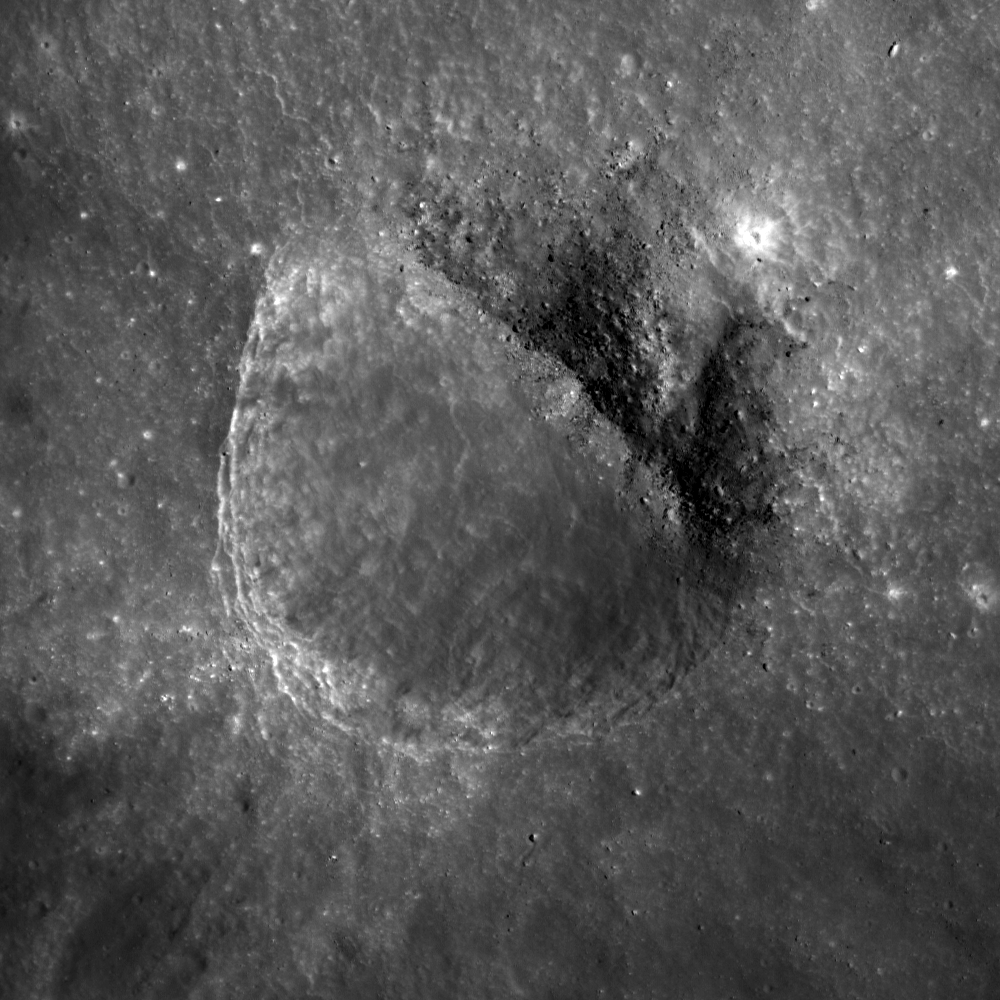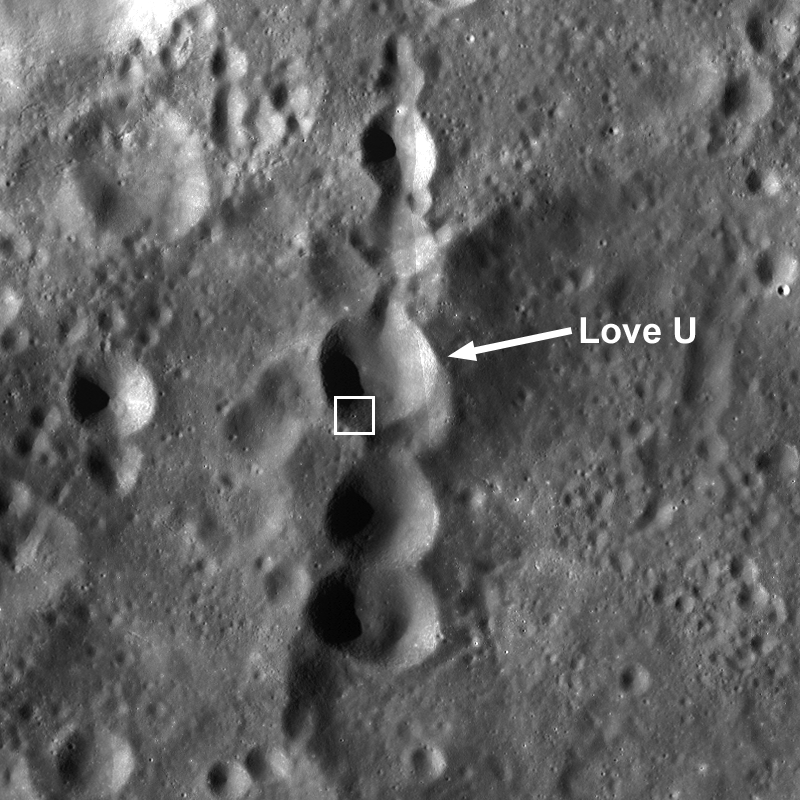
The ~320-m diameter crater in today's Featured Image is located inside the larger Love U crater (12 km in diameter; located at 5.535°S, 128.024°E). Why does this fresh crater look "squished" on one side? The inner wall of Love U slopes downwards from the lower left to the upper right. The lower left hand portion of the crater rim is crisp and unmodified, because it is the upslope part of the crater. The upper right hand half of the crater rim is not circular and is very modified by debris that fell downslope. Asymmetric craters are sometimes due to the trajectory of the impacting bolide being <15° from the surface (oblique impact). The ~26° slope of Love U's inner wall dominates the morphology of the crater in the Featured Image. The rays of the crater are also asymmetric; longer rays extend downslope into Love U crater.
For more love on the Moon check out this lunar valentine!
The WAC image above shows that Love U is part of a crater chain. Some of the craters in the chain are oval or elongated, which indicates that they are probably secondaries from a large impact. Crater chains can be formed by secondary craters, volcanic collapse in association with graben, or primary impacts from a string of smaller bolides. Planetary scientists use morphologic and contextual clues to determine how a crater chain formed.
Love U is a satellite crater of the main crater Love, a 90 km diameter, highly degraded crater on the far side of the Moon. The namesake of Love crater is Augustus Edward Hough Love, a mathematician who is well known for Love waves and Love numbers.
Explore the entire NAC image!
Related Images:
Published by Sarah Braden on 26 June 2013
